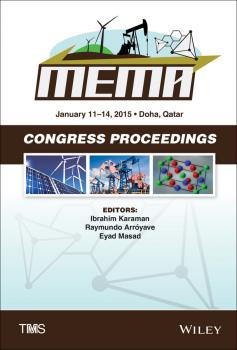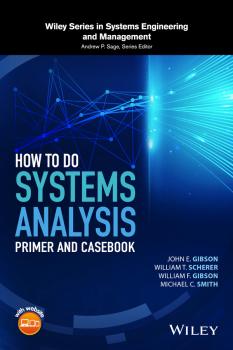ТОП просматриваемых книг сайта:
Техническая литература
Различные книги в жанре Техническая литература, доступные для чтения и скачиванияАннотация
This book deals with air-ground aeronautical communications. The main goal is to give the reader a survey of the currently deployed, emerging and future communications systems dedicated to digital data communications between the aircraft and the ground, namely the data link. Those communication systems show specific properties relatively to those commonly used for terrestrial communications. In this book, the system architectures are more specifically considered from the access to the application layers as radio and physical functionalities have already been addressed in detail in others books. The first part is an introduction to aeronautical communications, their specific concepts, properties, requirements and terminology. The second part presents the currently used systems for air ground communications in continental and oceanic area. The third part enlightens the reader on the emerging and future communication systems and some leading research projects focused on this scope. Finally, before the conclusion, the fourth part gives several main challenges and research directions currently under investigation.
Аннотация
Presents the foundational systemic thinking needed to conceive systems that address complex socio-technical problems This book emphasizes the underlying systems analysis components and associated thought processes. The authors describe an approach that is appropriate for complex systems in diverse disciplines complemented by a case-based pedagogy for teaching systems analysis that includes numerous cases that can be used to teach both the art and methods of systems analysis. Covers the six major phases of systems analysis, as well as goal development, the index of performance, evaluating candidate solutions, managing systems teams, project management, and more Presents the core concepts of a general systems analysis methodology Introduces, motivates, and illustrates the case pedagogy as a means of teaching and practicing systems analysis concepts Provides numerous cases that challenge readers to practice systems thinking and the systems methodology How to Do Systems Analysis: Primer and Casebook is a reference for professionals in all fields that need systems analysis, such as telecommunications, transportation, business consulting, financial services, and healthcare. This book also serves as a textbook for undergraduate and graduate students in systems analysis courses in business schools, engineering schools, policy programs, and any course that promotes systems thinking.
Аннотация
The book provides a systematic overview of Intelligent Transportation Systems (ITS). First, it includes an insight into the reference architectures developed within the main EU research projects. Then, it delves into each of the layers of such architectures, from physical to application layer, describing the technological issues which are being currently faced by some of the most important ITS research groups. The book concludes with some end user services and applications deployed by industrial partners. This book is a well-balanced combination of academic contributions and industrial applications in the field of Intelligent Transportation Systems. The most representative technologies and research results achieved by some of the most relevant research groups working on ITS, collated to show the chances of generating industrial solutions to be deployed in real transportation environments.
Аннотация
A comprehensive guide to the modelling and design of solid oxide fuel cell hybrid power plants This book explores all technical aspects of solid oxide fuel cell (SOFC) hybrid systems and proposes solutions to a range of technical problems that can arise from component integration. Following a general introduction to the state-of-the-art in SOFC hybrid systems, the authors focus on fuel cell technology, including the components required to operate with standard fuels. Micro-gas turbine (mGT) technology for hybrid systems is discussed, with special attention given to issues related to the coupling of SOFCs with mGTs. Throughout the book emphasis is placed on dynamic issues, including control systems used to avoid risk conditions. With an eye to mitigating the high costs and risks incurred with the building and use of prototype hybrid systems, the authors demonstrate a proven, economically feasible approach to obtaining important experimental results using simplified plants that simulate both generic and detailed system-level behaviour using emulators. Computational models and experimental plants are developed to support the analysis of SOFC hybrid systems, including models appropriate for design, development and performance analysis at both component and system levels. Presents models for a range of size units, technology variations, unit coupling dynamics and start-up and shutdown behaviours Focuses on SOFCs integration with mGTs in light of key constraints and risk avoidance issues under steady-state conditions and during transient operations Identifies interaction and coupling problems within the GT/SOFC environment, including exergy analysis and optimization Demonstrates an economical approach to obtaining important experimental results while avoiding high-cost components and risk conditions Presents analytical/computational and experimental tools for the efficient design and development of hardware and software systems Hybrid Systems Based on Solid Oxide Fuel Cells: Modelling and Design is a valuable resource for researchers and practicing engineers involved in fuel cell fundamentals, design and development. It is also an excellent reference for academic researchers and advanced-level students exploring fuel cell technology.
Аннотация
Biocatalysts are increasingly used by chemists engaged in fine chemical synthesis within both industry and academia. Today, there exists a huge choice of high-tech enzymes and whole cell biocatalysts, which add enormously to the repertoire of synthetic possibilities. Practical Methods for Biocatalysis and Biotransformations 3 will be a companion book to Practical Methods for Biocatalysis and Biotransformations (2009) and Practical Methods for Biocatalysis and Biotransformations 2 (2012). Following the successful format of the two volumes, it will be a “how-to” guide focusing on commercially available enzymes and strains of microorganisms that are readily obtained from culture collections. The source of starting materials and reagents, hints, tips and safety advice (where appropriate) will be given to ensure, as far as possible, that the procedures are reproducible. Comparisons to alternative methodology will be given and relevant references to the primary literature will be cited. Contents include: Biotransformation Process Technology Industrial Biooxidation Hydrolase catalysed hydrolysis/synthesis Reduction Oxidation Halogenation Transferase catalysed glycosylation, methylation, etc C-C bond formation Tandem Biocatalytic Reactions Practical Methods for Biocatalysis and Biotransformations, Volume 3 is an essential collection of validated biocatalytic methods which will find a place on the bookshelves of synthetic organic chemists, pharmaceutical chemists, and process R&D chemists in industry and academia.
Аннотация
THE ONLY SINGLE-SOURCE GUIDE TO THE LATEST SCIENCE, NUTRITION, AND APPLICATIONS OF ALL THE NON-BOVINE MILKS CONSUMED AROUND THE WORLD Featuring contributions by an international team of dairy and nutrition experts, this second edition of the popular Handbook of Milk of Non-Bovine Mammals provides comprehensive coverage of milk and dairy products derived from all non-bovine dairy species. Milks derived from domesticated dairy species other than the cow are an essential dietary component for many countries around the world. Especially in developing and under-developed countries, milks from secondary dairy species are essential sources of nutrition for the humanity. Due to the unavailability of cow milk and the low consumption of meat, the milks of non-bovine species such as goat, buffalo, sheep, horse, camel, Zebu, Yak, mare and reindeer are critical daily food sources of protein, phosphate and calcium. Furthermore, because of hypoallergenic properties of certain species milk including goats, mare and camel are increasingly recommended as substitutes in diets for those who suffer from cow milk allergies. This book: Discusses key aspects of non-bovine milk production, including raw milk production in various regions worldwide Describes the compositional, nutritional, therapeutic, physio-chemical, and microbiological characteristics of all non-bovine milks Addresses processing technologies as well as various approaches to the distribution and consumption of manufactured milk products Expounds characteristics of non-bovine species milks relative to those of human milk, including nutritional, allergenic, immunological, health and cultural factors. Features six new chapters, including one focusing on the use of non-bovine species milk components in the manufacture of infant formula products Thoroughly updated and revised to reflect the many advances that have occurred in the dairy industry since the publication of the acclaimed first edition, Handbook of Milk of Non-Bovine Mammals, 2nd Edition is an essential reference for dairy scientists, nutritionists, food chemists, animal scientists, allergy specialists, health professionals, and allied professionals.
Аннотация
Superior program management begins with superior information and strategy Program Management for Improved Business Results, Second Edition is a practical guide to real-world program management, written to align with the rigorous PMI® PgMP® certification standards. The book explains the benchmarks and best practices that help shape a superior program manager, and provides case studies that illustrate the real-world application of management concepts. Written by a team composed of both industry professionals and academics, the book strikes a balance between theory and practice that facilitates understanding and better prepares candidates for the PgMP. Managers at all levels will learn the insights and techniques that are shaping modern management expectations. The Project Management Institute and the Product Development and Management Association both agree that program management is a critical element in the successful integration of business strategy and project management. The certification process is difficult, and few complete it – but demand for competent professionals is high. Program Management for Improved Business Results addresses this disconnect, preparing readers to fill the gaps and help businesses achieve the level of program management integration required by professional organizations. Topics include: Aligning programs with business strategy Program planning, execution, and processes Management metrics and strategic and operational tools Roles, responsibilities, and core competencies The book focuses on both the macro and the micro levels, explaining the successful integration of business strategy with project portfolios as well as the managing of a single program. Case studies present both issue-oriented and comprehensive perspectives, and guidance includes real, actionable steps. For professionals seeking improved program outcomes, Program Management for Improved Business Results is a roadmap to exceptional management skills. (PMI and PgMP are registered marks of the Project Management Institute, Inc.)
Аннотация
This book covers several aspects of the fatigue behavior of textile and short fiber reinforced composites. The first part is dedicated to 2D and 3D reinforced textile composites and includes a systematic description of the damage evolution for quasi-static and tensile-tensile fatigue loadings. Acoustic emissions and digital image correlation are considered in order to detect the damage modes’ initiation and development. The acoustic emission thresholds of the quasi-static loading are connected to the “fatigue limit” of the materials with distinctions for glass and carbon reinforcements. The second part is devoted to the fatigue behavior of injection molded short fiber reinforced composites. Experimental evidence highlights the dependence of their fatigue response on various factors: fiber and matrix materials, fiber distribution, environmental and loading conditions are described. A hybrid (experimental/simulations) multi-scale method is presented, which drastically reduces the amount of experimental data necessary for reliable fatigue life predictions.
Probabilistic Finite Element Model Updating Using Bayesian Statistics. Applications to Aeronautical and Mechanical Engineering - Sondipon Adhikari
Аннотация
Probabilistic Finite Element Model Updating Using Bayesian Statistics: Applications to Aeronautical and Mechanical Engineering Tshilidzi Marwala and Ilyes Boulkaibet, University of Johannesburg, South Africa Sondipon Adhikari, Swansea University, UK Covers the probabilistic finite element model based on Bayesian statistics with applications to aeronautical and mechanical engineering Finite element models are used widely to model the dynamic behaviour of many systems including in electrical, aerospace and mechanical engineering. The book covers probabilistic finite element model updating, achieved using Bayesian statistics. The Bayesian framework is employed to estimate the probabilistic finite element models which take into account of the uncertainties in the measurements and the modelling procedure. The Bayesian formulation achieves this by formulating the finite element model as the posterior distribution of the model given the measured data within the context of computational statistics and applies these in aeronautical and mechanical engineering. Probabilistic Finite Element Model Updating Using Bayesian Statistics contains simple explanations of computational statistical techniques such as Metropolis-Hastings Algorithm, Slice sampling, Markov Chain Monte Carlo method, hybrid Monte Carlo as well as Shadow Hybrid Monte Carlo and their relevance in engineering. Key features: Contains several contributions in the area of model updating using Bayesian techniques which are useful for graduate students. Explains in detail the use of Bayesian techniques to quantify uncertainties in mechanical structures as well as the use of Markov Chain Monte Carlo techniques to evaluate the Bayesian formulations. The book is essential reading for researchers, practitioners and students in mechanical and aerospace engineering.










